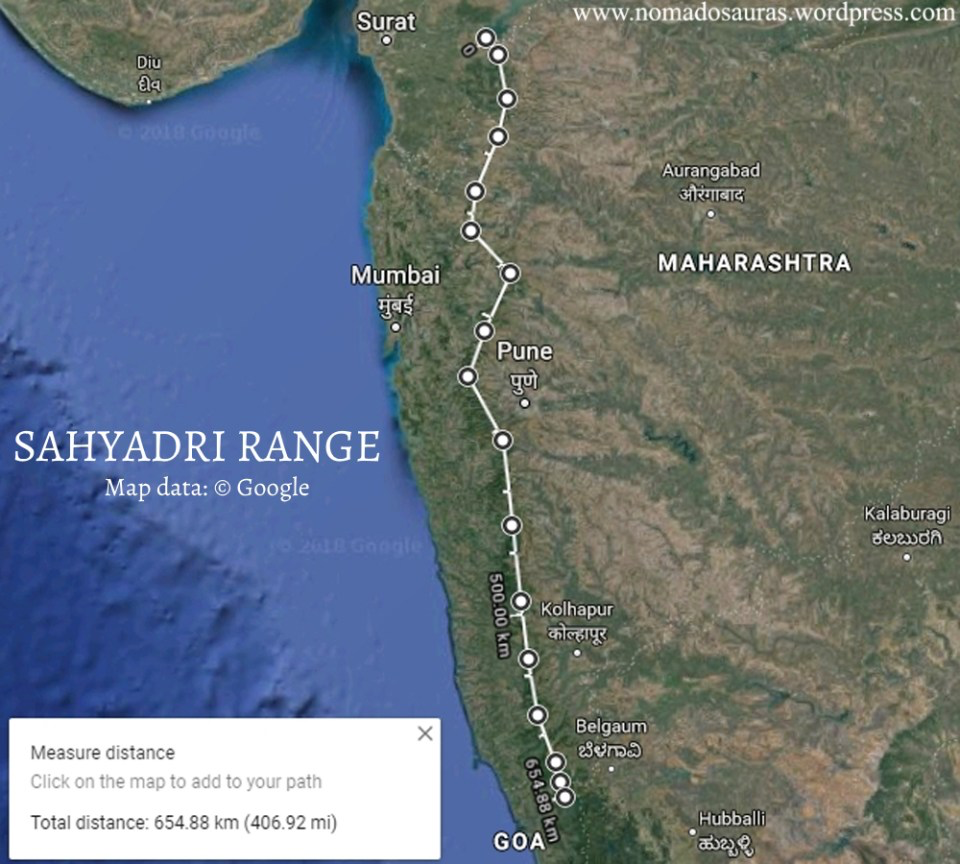Description

Disclaimer: Copyright infringement not intended.
Context
The impact of land-use changes on the rocky habitats in the Sahyadri plateaus of Maharashtra, India.
Details
- The rapid shift from traditional local grain cultivation to monoculture plantations of mango and cashew is affecting the rocky habitats in the Sahyadri plateaus of Maharashtra.
- A team of five scientists conducted a study to understand how animals, including elusive amphibians, insects, and reptiles, are responding to these land-use changes in rocky habitats.
- The study has been published in the peer-reviewed international journal, Global Ecology and Conservation.
Focus of the Study
- The scientists studied various animals, such as the white-striped viper gecko, Seshachari’s caecilian (a unique legless amphibian), saw-scaled viper, ants, spiders, and scorpions, which live under loose rocks on the plateaus.
- These rocky shelters protect some endemic and threatened animals from extreme weather conditions like scorching heat during summer and heavy monsoon rains.
- However, the rapid land-use changes, including the conversion of natural plateaus into mango and cashew orchards, are threatening the survival of these animals.

Impact of Changing Agricultural Trends
- The traditional local grain cultivation in the rock outcrops is being abandoned, and monoculture plantations of mango and cashew are being established, leading to the destruction of natural plateaus.
- The expansion of mango orchards has resulted in the conversion of more than 25,000 hectares of lateritic plateaus.
- The shift in land-use patterns is affecting the rarity and adaptability of the animals that depend on these rocky habitats.
Need for Further Studies
- The study highlights the need for more intensive research to understand the socio-ecological impacts of traditional paddy abandonment on amphibians, while also examining how orchards negatively impact other animals in rock outcrops.
- The scarcity of animals found under the rocks during the survey suggests their rarity, making it essential to preserve representative plateau habitats in collaboration with local communities who own the land.
Conservation Concerns
- The animals living under the rocks are poorly known, and their disappearance from the plateaus may have significant impacts on the ecosystem services they provide.
- Removing even a single rock can lead to cascading impacts on biodiversity due to the sensitivity of these unique animals to changes in their habitats.
Establishing Baseline for Conservation
- The team compared the rock-dwelling animal communities in plateaus, abandoned paddy fields, and orchards to establish a baseline for their conservation.
- The data generated from the study could potentially help conserve the plateaus as biodiversity heritage sites, highlighting the importance of preserving these rocky habitats.
Support and Funding
- The study received support from organizations like On the Edge Conservation (United Kingdom), the Habitat Trust (India), and the Maharashtra Forest Department, along with Nature Conservation Foundation-India (NCF) and Bombay Environmental Action Group (BEAG).
About Sahyadri Plateau

Disclaimer: Copyright infringement not intended.
- The Sahyadri plateau is located in the western part of India, parallel to the Arabian Sea.
- It stretches from Gujarat in the north to Karnataka in the south, and covers an area of over 100,000 square kilometers.
- The Sahyadri plateau is a mountainous region, with an average elevation of around 1,000 meters.
- The highest peak in the plateau is Kalsubai, which is located in Maharashtra and has an elevation of 1,646 meters.
- The Sahyadri plateau is made up of a variety of rocks, including granite, gneiss, and sandstone.
- The plateau is also home to a number of minerals, including iron ore, manganese, and bauxite.
- The Sahyadri plateau has a tropical monsoon climate, with a wet season from June to September and a dry season from October to May.
- The average annual rainfall in the plateau is around 2,000 millimeters.
- The Sahyadri plateau is home to a variety of flora and fauna, including evergreen forests, deciduous forests, and scrublands.
- The plateau is also home to a number of endangered species, including the lion-tailed macaque, the Nilgiri tahr, and the Malabar civet.
- The Sahyadri plateau is home to a number of human activities, including agriculture, forestry, and mining.
- The plateau is also a popular tourist destination, with a number of hill stations and wildlife sanctuaries located in the region.
|
PRACTICE QUESTION
Q) Discuss the ecological significance and environmental challenges of the Sahyadri Plateau (Deccan Plateau) in India. How can sustainable development be promoted to ensure the long-term conservation of this crucial region? (250 words)
|

https://epaper.thehindu.com/ccidist-ws/th/th_delhi/issues/45368/OPS/G8SBHRJQ4.1+GBUBHRNNU.1.html

















